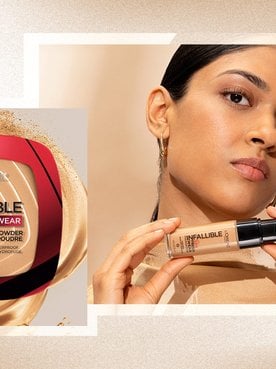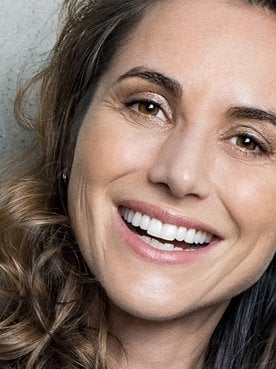If you’ve ever looked in the mirror halfway through the day and noticed your foundation slipping, creasing, or fading, you’re not alone. Even the most carefully applied makeup can lose its staying power if the right base isn’t in place. That’s where face primer comes in. Think of it as the invisible step that ensures all your favorite products—from foundation to highlighter—perform at their best. But here’s the key: primer is not one-size-fits-all. Keep reading to learn how to choose the best primer for your skin type (oily, dry, sensitive, or mature), making all the difference in how your makeup looks and lasts.
What Is Face Primer?
A skin primer is a makeup product that preps your face before foundation, concealer, or any other complexion products. It acts as a barrier between your skin and makeup, smoothing texture, evening tone, and helping your makeup stay put for longer. Primers can also help minimize irritation, blur imperfections, and create a flawless-looking base. While there are primers for eyes and lipstoo, here we’ll focus on skin primers for your face. We will also talk about what primer to use depending on your skin type.
Benefits of Primer
Using a face primer brings several benefits beyond just helping makeup last:
- Smooths skin: Fills in fine lines, blurs pores, and softens rough texture for a more even canvas.
- Extends makeup wear: Keeps foundation, blush, and bronzer from fading, creasing, or smudging throughout the day.
- Addresses skin concerns: Hydrating formulas relieve dryness, mattifying options control shine, pore-minimizing primers refine texture, and color-correcting options even out tone.
- Protects skin: Many primers act as a barrier that reduces friction between your skin and makeup, helping prevent clogged pores and irritation.
- Can be worn alone: A swipe of primer without foundation can instantly make skin look smoother, more balanced, and naturally polished.
What Are the Main Types of Primer?
Face primers come in different formulas, each catering to a specific skin need. Here’s a closer look:
Illuminating primer
If your skin looks dull or lacks radiance, an illuminating face primer can instantly revive your complexion. These formulas add a subtle glow without the sparkle of a traditional highlighter, making them ideal for anyone dealing with dryness or mature skin that needs extra luminosity. TheL'Oréal Paris True Match Lumi Glotion Natural Glow Enhancer is enriched with glycerin and shea butter to hydrate while giving skin a natural radiance. Another option is theL'Oréal Paris Age Perfect Makeup Blurring Face Primer infused with Serum, which combines a caring serum with a blurring effect to smooth fine lines and add healthy-looking brightness.
Mattifying primer
If midday shine and makeup breakdown are your biggest frustrations, a mattifying skin primer is your solution. By absorbing oil and refining the look of pores, it keeps your base smooth and matte from morning to night. This is the best primer for oily skin and the best primer for combination skin, especially in the T-zone. TheL'Oréal Paris Prime Lab Up to 24H Pore Minimizer is a lightweight gel product that controls oil for up to 24 hours while blurring imperfections.
Hydrating primer
When your foundation clings to flakes or skin feels tight, a hydrating face primer makes a big difference. These formulas replenish moisture, creating a plump, supple canvas that helps makeup glide on evenly. They’re the best primers for dry skin and the best primers for sensitive skin, since they provide comfort while enhancing glow. TheL'Oréal Paris True Match Lumi Glotion Natural Glow Enhancer doubles as a moisturizer and glow booster, making it a versatile choice for hydration and radiance.
Silicone-based primer
If visible pores or uneven texture are your main concerns, a silicone-based primer makeup can smooth them away. These primers create a velvety finish that grips foundation while filling in pores and fine lines. They’re considered the best primer for large pores and textured skin, offering instant blurring effects. TheL'Oréal Paris Prime Lab Up to 24H Pore Minimizer is silicone-based and minimizes the look of pores while locking makeup in place for up to 24 hours.

Color-correcting primer
Uneven skin tone, redness, or sallowness can all benefit from a color-correcting skin primer. Available in shades like green, lavender, and peach, these formulas neutralize specific concerns while prepping your face for makeup. They’re especially helpful if you’re looking for the best primer for acne-prone skin that also addresses redness. TheL'Oréal Paris Prime Lab Up to 24H Redness Eraser uses a green tint to calm irritation and even out tone while extending makeup wear.
Protective primers
If your skin reacts easily or you prefer lightweight formulas, protective primers are a great option. These are the best primers for sensitive skin because they soothe while creating a comfortable base for makeup. Some primers even include SPF to protect your skin from damaging sun rays.

Shop the Products
How Do I Know If I Need a Primer?
While face primer isn’t strictly mandatory, it’s the secret to taking your makeup from good to great. If your skin gets oily, if your foundation clings to dry patches, or if your pores and redness show through even after makeup, a skin primer can help. For mature skin, primers smooth fine lines, while for sensitive skin, they can act as a protective barrier. Even on no-makeup days, applying a face primer alone can give skin a soft-focus finish that feels polished.
How to Choose the Best Makeup Primer
When choosing the right face primer, match it to your skin’s needs:
- The best primer for oily skin is a mattifying or silicone-based primer to control shine and blur pores. Try theL'Oréal Paris Prime Lab Up to 24H Pore Minimizer, a gel formula that minimizes pores and absorbs oil for long-lasting freshness.
- The best primer for dry skin is hydrating and glow-boosting, smoothing flakes and restoring radiance. TheL'Oréal Paris True Match Lumi Glotion Natural Glow Enhancer, enriched with glycerin and shea butter, leaves skin soft, moisturized, and radiant.
- The best primer for acne-prone skin should be non-comedogenic with clarifying ingredients. TheL'Oréal Paris Prime Lab Up to 24H Pore Minimizer contains AHA, LHA, and BHA to gently exfoliate and keep breakouts at bay.
- The best primer for sensitive skin is soothing, fragrance-free, and gentle to prevent irritation. TheL'Oréal Paris Age Perfect Makeup Blurring Face Primer infused with Serum blurs lines while delivering calming hydration.

It’s also worth remembering: primer is not foundation. While foundation provides coverage, primer is all about prepping skin and ensuring your makeup applies smoothly and lasts.
How to Apply Primer
Now that you’ve chosen your face primer, here’s how to use it in your routine to get the most out of your makeup:
1. Complete your skin care routine
Face primer comes after skincare, not before. Always cleanse, moisturize, and apply sunscreen first so your skin is hydrated and protected. A smooth, prepped base will help your primer grip and extend the wear of your makeup. Remember if the primer itself does not contain sun protection, you have to layer sunblock on your face before applying.
2. Apply your skin primer
Use a pea-sized amount and apply evenly with your fingers or a makeup sponge, blending from the center of your face outward. For oily areas, focus on mattifying primers like theL'Oréal Paris Prime Lab Up to 24H Pore Minimizer. For dry skin, hydrating formulas like theL'Oréal Paris True Match Lumi Glotion Natural Glow Enhancer provide comfort and a radiant glow. Wait a minute or two for your primer to set before layering foundation.
3. Prime lids, lips, and other areas
While skin primer is made for the complexion, specialized primers exist for eyes and lips. Using an eye primer helps shadow colors pop and last longer, while a lip primer can keep lipstick from feathering. Apply them before moving on to your makeup for those areas for better staying power.
4. Finish your makeup routine
Once your base is primed, apply your foundation, concealer, and other products as usual. For long-lasting wearon all skin types, lock in your look with theL'Oréal Paris Infallible 3-Second Setting Mist.
Shop the Products
FAQs About Face Primer
Which face primer is best for mature skin?
TheL'Oréal Paris Age Perfect Makeup Blurring Face Primer infused with Serum is ideal for mature skin because it contains a caring serum that hydrates and smooths the texture, helping foundation glide on evenly and last longer. It also softens the look of wrinkles and pores, making it one of the best primers for mature skin.
What is the difference between a primer and a foundation?
Face primer preps your skin for makeup by smoothing texture, minimizing pores, and extending wear so your base lasts longer. Foundation, on the other hand, provides coverage to even out skin tone, conceal imperfections, and create a polished finish on top of your primer.
Can primer be worn alone without foundation?
Yes, primer can be worn solo. A lightweight face primer smooths skin, blurs imperfections, and evens tone, giving a fresh and healthy-looking finish that works well for minimal makeup days. Options like theL'Oréal Paris True Match Lumi Glotion Natural Glow Enhancer can even double as a moisturizer and glow booster, making them ideal for a quick no-foundation look.
How long should you wait between applying primer and foundation?
Wait at least one to two minutes after applying your face primer. This pause allows the primer to fully absorb and set on the skin, creating the perfect grip for foundation, concealer, and other products, ensuring a smoother application and longer-lasting wear.
Next Up: Makeup for Beginners: Top Mistakes You Want to Avoid
Photo courtesy of L’Oréal Paris







